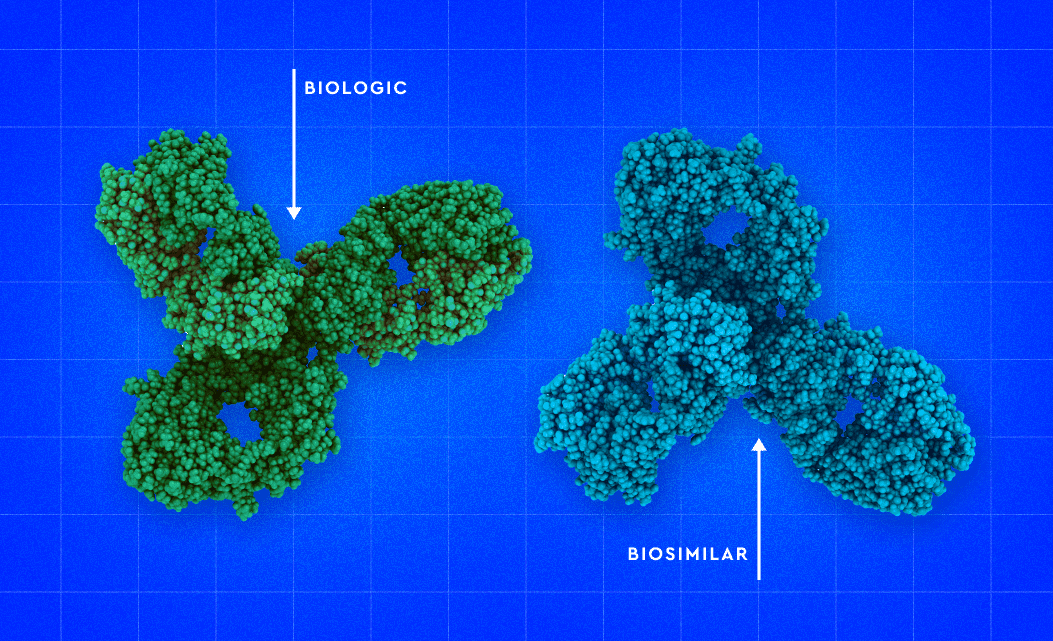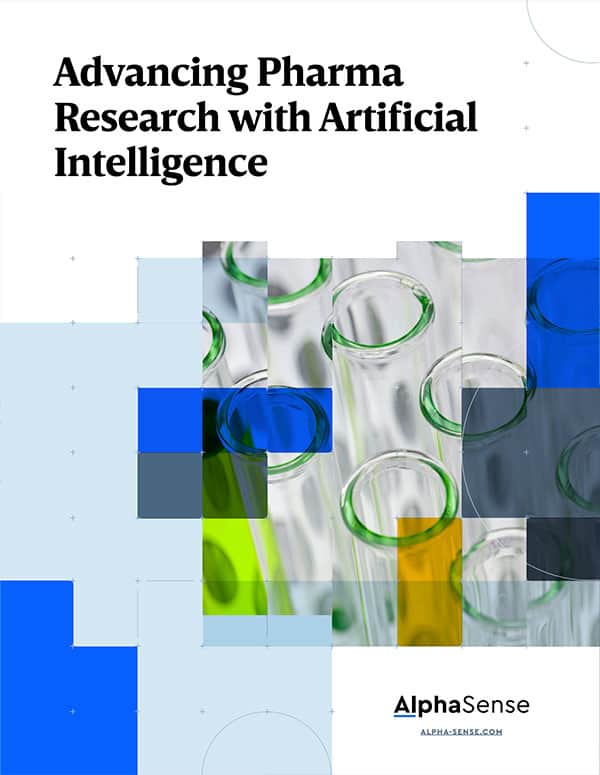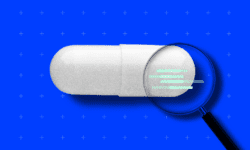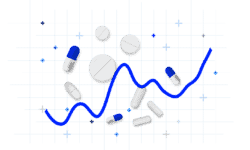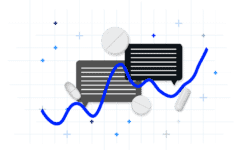Biosimilar medicines, a nearly identical copy of original biologic treatments, have recently taken center stage in the pharma industry. As approvals and implementation of biosimilar products, therapies, and medicines continue to accelerate, the U.S. healthcare system is set to experience enormous cost cuts and save Americans millions of dollars in life-essential care.
The financial burden of manufacturing biological medicines involves using cutting-edge technologies to extract large complex molecules derived from living cells—a challenging and expensive process. On the other hand, biosimilar manufacturing relies on replicating the amino acid sequences of its reference drug, leaving a small window for minor differences and eliminating the costs and lead time for FDA approval.
Already, pharma investors are reaping the financial benefits of pouring capital into the cost-effective alternative. For biologic medicines, studies have revealed research and development costs at $985 million to bring a single product to market. In addition, patients experience the financial brunt, paying on average between $10,000-$30,000 per year for some treatments, with some reaching millions of dollars, according to the National Conference of State Legislature.
Meanwhile, biosimilars have list prices 15% to 35% lower than their reference brand-name products, and they have been projected to save between $38 and $124 billion in patient healthcare costs from 2021 to 2025.
Below, we dive deep into this lucrative industry trend to uncover what the key growth opportunities, obstacles, and outlook are for the biosimilar market.
Related Reading: The Evolution of Pharma Market Research
Top Growth Drivers of Biosimilars
Cost Savings and Market Expansion
One of the biggest selling points for biosimilars are the cost savings they offer compared to branded biologics. In the U.S. alone, cumulative savings since the introduction of biosimilars have already reached $36 billion. Healthcare systems are increasingly feeling the pressure to reduce drug expenditures, which is expected to result in further growth in the biosimilar market, particularly as more high-cost biologics lose patent protection.
FDA has approved four biosimilars for Humira, which is a great thing. They are also adding some more biosimilar. The cost is also coming down on the biosimilar because drug is just a volume game, more volume you have, the more price reduction manufacturers can give. Now, it’s just a catch-22, which one needs to come first, and luckily, payer is also on board. They probably are done with Humira on negotiation with AbbVie. They had their run for last 10, 12 years or even longer, so I think now you started to see more penetration of biosimilar.”
“I think the Humira still enjoys a great penetration as much as 70% in U.S., but it’s coming down. They will start to see biosimilars stealing the market share. I think within the next three to five years, in that range, you will start to see biosimilar taking majority of the market share.”
– Former Director at Cigna | Expert Call
Patent Expirations and New Approvals
A variety of blockbuster drugs have lost US patent exclusivity in the last two years—including Humira (from Abbvie), Stelara (from Johnson & Johnson), Vyvanse (from Takeda), and Enbrel (from Amgen). This is opening the gates for biosimilar competitors to enter the market, and in fact, several have already been approved by the FDA. Wezlana, a biosimilar to Stelara, targets psoriasis. Two biosimilars to Enbrel, Eticovo and Erelzi, target rheumatoid arthritis and psoriasis.
On the market side across Europe, the biosimilars roughly represent 10%, 12% of the total biologics market and it is up from 2% only five years ago, so it’s a pretty nice penetration, and of course, the main growth drivers have been oncology and immunotherapy. Also, if you look at the therapeutic area coverage, then probably 2/3 of the biologics market value is accessible to biosimilars already and has been accessed. This is perchance that oncology and immunotherapies were the first to expire, therefore, 3/4 of the sales are actually happening in those two therapeutic areas. I would imagine that this remains the same in terms of the trend of higher coverage.”
– Former Director of STADA | Expert Call
Regulatory and Policy Support
There is a growing movement for regulatory reforms to streamline biosimilar approval processes. Industry experts are pushing for shortening clinical trial processes, which would shorten the drug development timeline and reduce costs. Governments and regulatory bodies, especially in the US and Europe, are implementing policies to encourage biosimilar adoption.
For example, the FDA has released the Biosimilars Action Plan, aimed to facilitate innovation and competition in the drug market through the development of biosimilars and interchangeable biosimilars. The US government has released the Biosimilar User Fee Act, which provides the FDA with additional resources and staff to approve biosimilars. The Centers for Medicare and Medicaid Services (CMS) implemented Medicare Part B, a temporary payment increase for qualifying biosimilars, to increase access to and utilization of biosimilars and promote competition in the market.
Obstacles to Biosimilar Adoption
Lack of Education
Despite the fact that the first biosimilar was approved almost a decade ago in the U.S., adoption has been slow among both patients and healthcare providers. Mostly, this is due to a lack of education—these drugs seem new and unfamiliar, and both clinicians and patients are unaware of the scientific rigor behind biosimilar development, as well as the benefits of these drugs.
A gastroenterologist and professor at University of Chicago Medicine states that with patients, it’s important to explain that side effects associated with biosimilars are almost identical to those associated with the reference biologic, so the patient would most likely not feel any difference when they switch from one to the other. For clinicians, it’s important to stress that the FDA carefully reviews all biosimilar studies to ensure there are no clinically meaningful differences in safety or efficacy compared to the reference biologic. Finally, it’s important to explain to both patients and providers how much more cost-effective biosimilars are and how they can lead to better patient outcomes.
There are patients who don’t want to hear the word biosimilar. They don’t have enough data. They don’t understand [biosimilars]. They think people are injecting some kind of a live thing in their body. It’s a foreign thing that they are not accustomed to, and these are some senior citizens. They just are not comfortable. There is not enough education. That is one of the reasons it hasn’t penetrated in U.S.
Also, on the doctor side, there isn’t much data. There are still some doctors who are not comfortable prescribing biosimilars or biologics for that matter.”
– Former Director at Cigna | Expert Call
Regulatory Hurdles
The biosimilar market has faced significant regulatory challenges, such as complex approval processes and ongoing patent litigations by originator biologic manufacturers. Recently, the FDA has released new guidance on biosimilar post-approval manufacturing changes.
In response, biosimilar manufacturers have expressed concern that these additional stipulations are not only unnecessary, but could imply that biosimilars pose different or additional risks compared to biologics, which is not the case.
In general, biosimilar guidelines are constantly changing, which creates uncertainty and increases risks for biosimilar developers. The approval process is also lengthened, relative to biologics, which delays market entry and increases development costs.
Furthermore, reference product manufacturers frequently create patent thickets—multiple layers of patents covering various aspects of the biologic—which are intended to make it more difficult for biosimilars to enter the market without risking patent infringement. When patent litigation occurs, it results in significant delays to market entry, as well as substantial expenses for biosimilar manufacturers.
Inflation Reduction Act
The Inflation Reduction Act (IRA) of 2022 had broad objectives for a variety of industries, one of which was reducing healthcare expenses by enhancing affordability of prescription drugs. While the IRA has the potential of helping the biosimilar market by introducing incentives for adoption and helping them compete against high-cost biologics, the act also presents potential challenges for biosimilars.
For example, if certain biologics significantly drop in price, this would make it harder for biosimilars to compete with them, as price is their biggest advantage. Additionally, the pressure on biosimilar manufacturers to lower their prices even further could impact profitability and discourage future development of new biosimilars.
Finally, there are concerns that payers and pharmacy benefit managers (PBMs) will prioritize biologics with negotiated prices under the IRA framework, leading biosimilars to face challenges in obtaining reimbursement or coverage.
Related Reading: How the Inflation Reduction Act Impacts Big Pharma
Outlook on Biosimilars
Overall, the biosimilar market continues to expand around the world. Valued at $20.44 billion in 2022, the market size is projected to grow from $23.96 billion in 2023 to $73.03 billion in 2030—a CAGR of 17.3% during the forecast period.
Europe continues to be a leader in biosimilar adoption, with biosimilars accounting for over half of the market share for certain biologic categories, particularly in oncology and autoimmune diseases. Compared to the FDA, the European Medicines Agency (EMA) has approved a broader range of biosimilars, supported by government policies that encourage their use.
In the U.S., the biosimilar market is growing quickly, boosted by FDA regulations and rising demand for lower-cost treatments. At the same time, tremendous growth is currently happening in the APAC region, particularly in China and India due to their manufacturing capabilities and supportive government policies.
This is an exciting moment for biosimilars, as many blockbuster biologics are reaching the end of their patent life and new policies are constantly emerging to support biosimilar production. As biosimilars start becoming less of a novelty, patient and provider trust is expected to grow, which will ultimately boost adoption.
At the same time, regulatory hurdles continue to stall progress, particularly in the U.S. and Europe. Development costs are high, and the extensive clinical testing and advanced manufacturing capabilities that biosimilars currently require is a deterrent for smaller companies. It’s still unclear how the Inflation Reduction Act will affect the biosimilar market in the U.S., and patient and provider hesitancy continues to be a very real challenge.
Overall, the outlook for biosimilars is full of uncertainty, yet optimistic. Biosimilars pose a tremendous opportunity for expanding healthcare options and enhancing patient outcomes, as long as regulatory organizations and governments continue to support their growth and development.
Tracking Biosimilar Developments in Real Time
Identifying and pursuing pharma industry trends can be a full-time endeavor, as new biosimilar products and approval processes are constantly being introduced to the market. It’s why more C-Suite executives are implementing market intelligence platforms that leverage AI into their operations to quickly find the answers they need and get a competitive edge. AlphaSense provides this and more.
Sort through our extensive content library, aggregating business documents from over 10,0000 content sources, and use our AI search technology to extract the most crucial insights and filter out the noise—in seconds.
Start your free trial with AlphaSense today to see how our platform can get you ahead of your competition.

